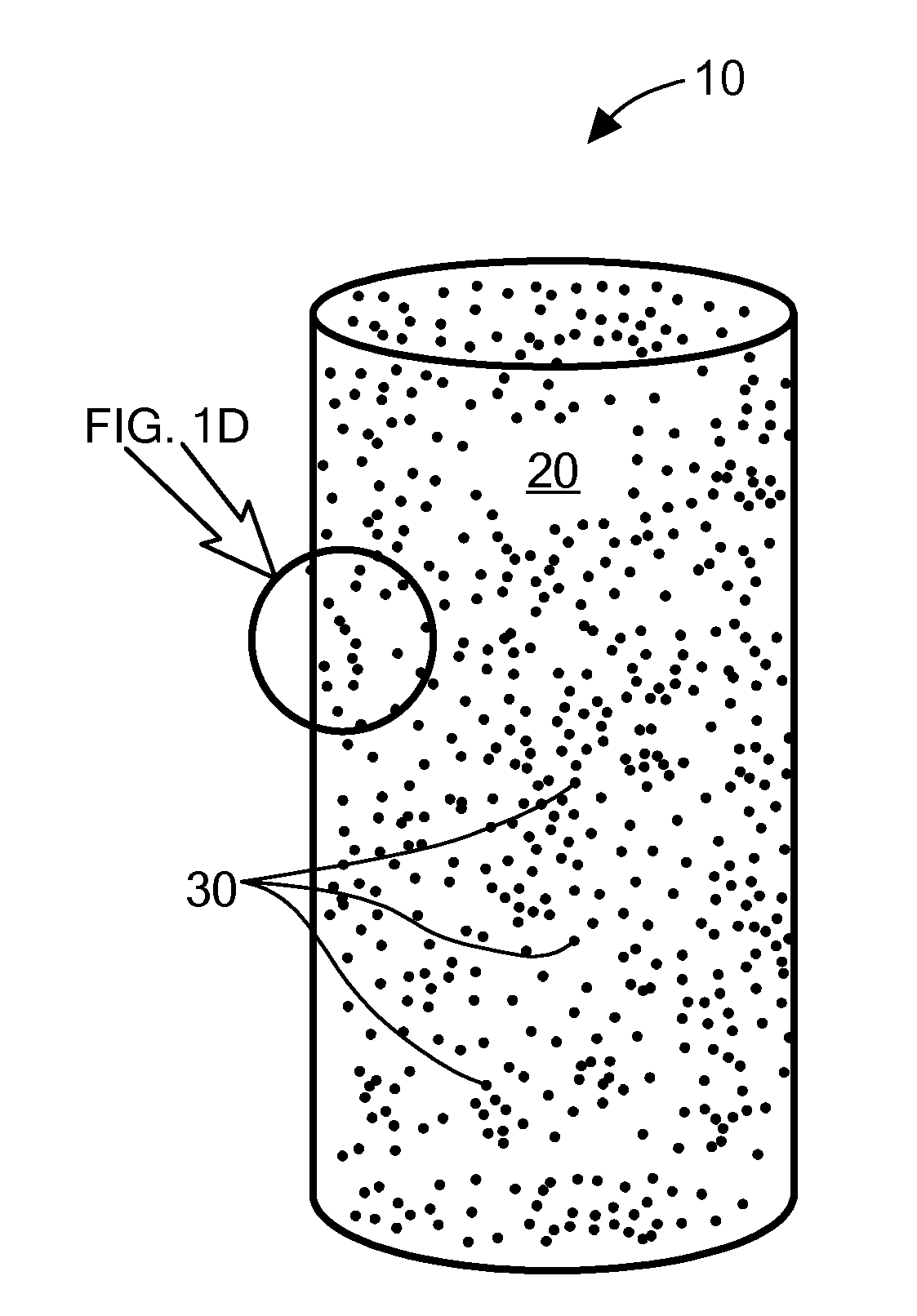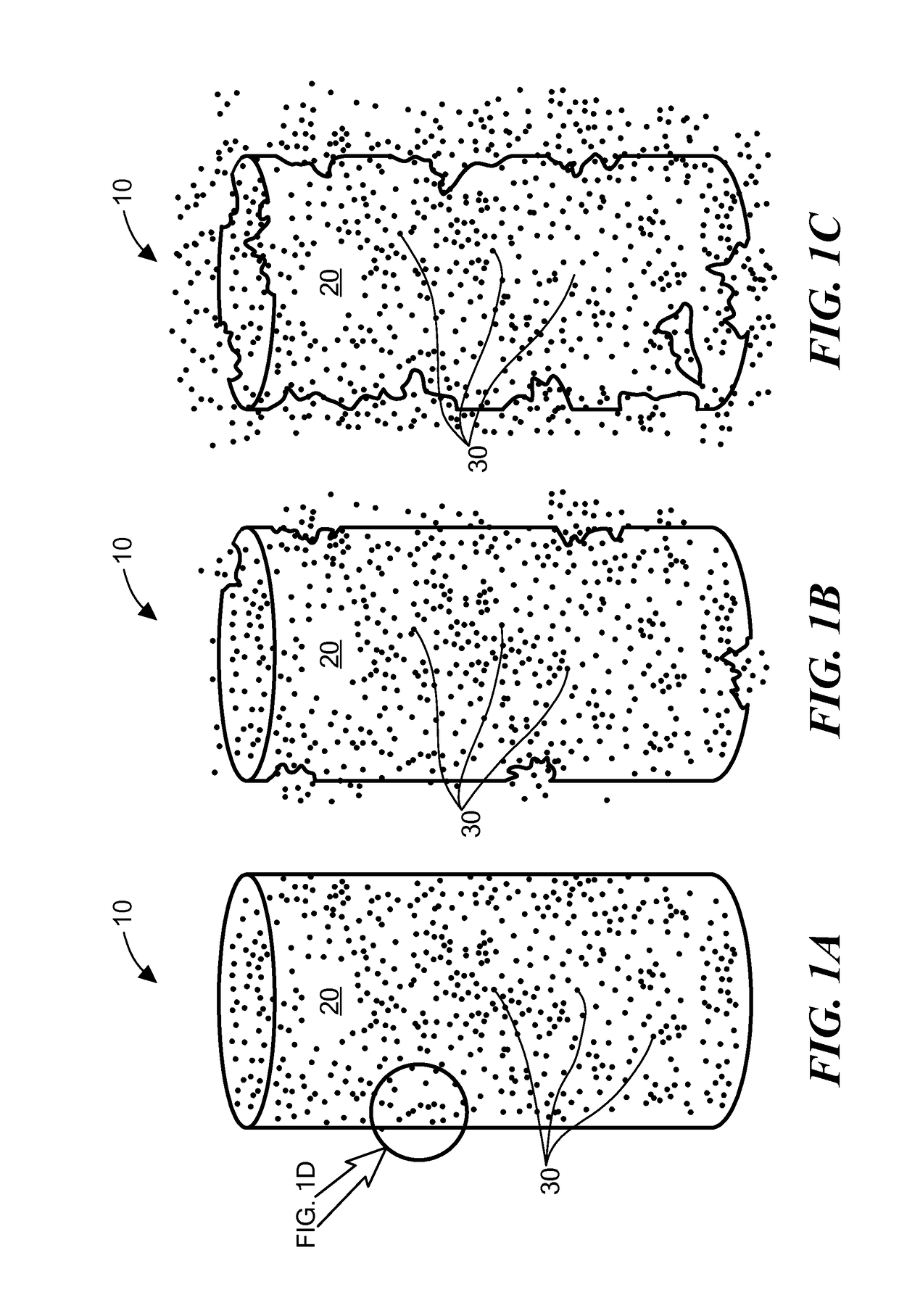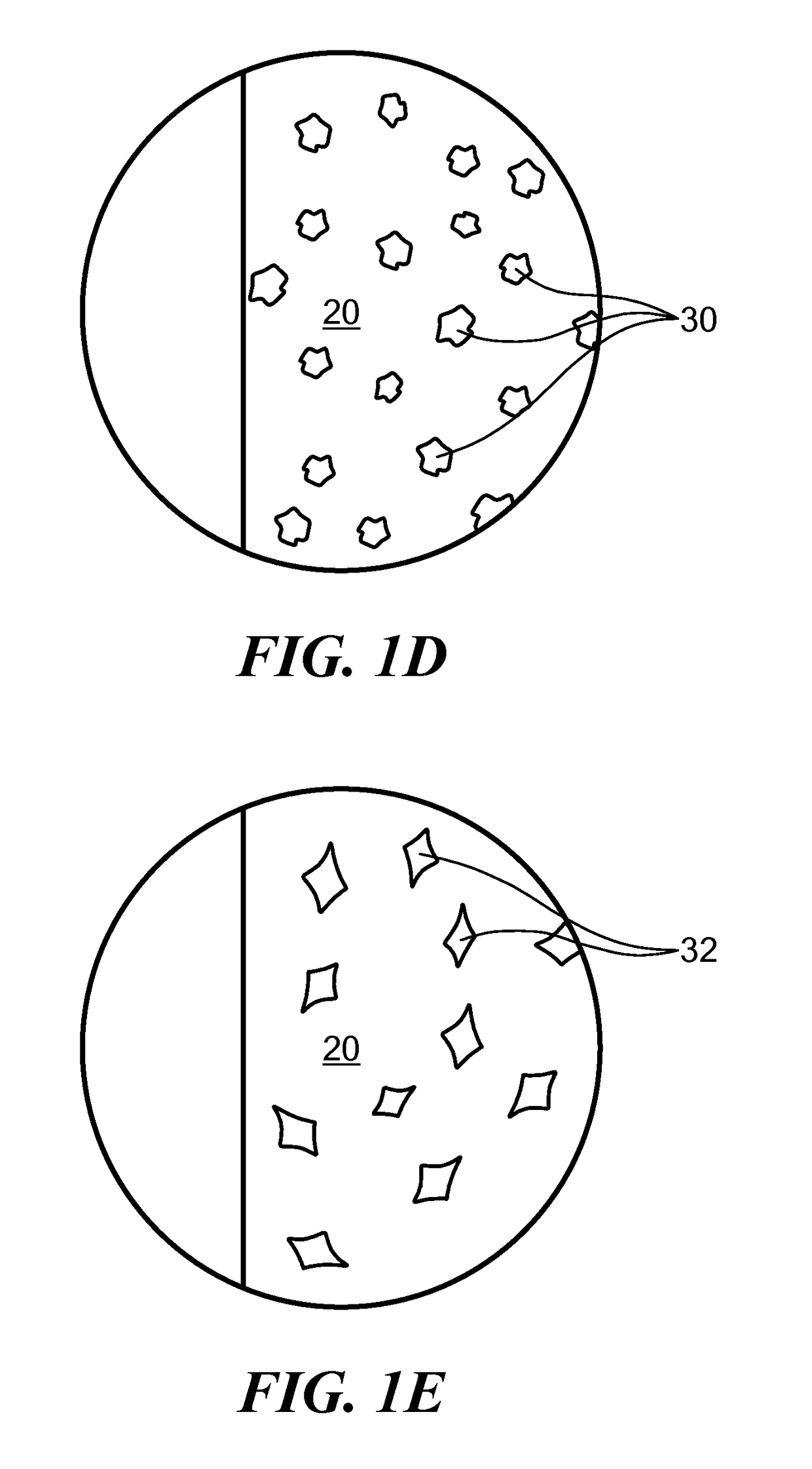Biopolymer-Nanoparticle Composite Implant for Tumor Cell Tracking
a biopolymer and nanoparticle technology, applied in the direction of powder delivery, drug compositions, medical preparations, etc., can solve the problems of most significant challenges in the management of cancer, accompanied by significant morbidities, and current lymph node staging via lymphadenectomy
- Summary
- Abstract
- Description
- Claims
- Application Information
AI Technical Summary
Benefits of technology
Problems solved by technology
Method used
Image
Examples
example 1
[0282]In one example, 250-300 mg of PLGA was dissolved in a minimum amount of dimethyl sulfoxide (DMSO). Docetaxel was dissolved in DMSO, and the two solutions were mixed using sonication to obtain a viscous uniform slurry. The slurry was transferred to a 1 ml syringe using a Luer stub adapter (0.5 in; 18G) attached to a silicon tube (inner diameter 0.8 mm). The paste was infused at a predetermined flow rate into the silicon tubing using an infusion pump. The tube was dried overnight at 45-50° C. The crystallized implants were taken out of the tubing using brachytherapy stubs, cut into 5 mm lengths, and stored at room temperature in the dark.
example 2
[0283]A prototype implant with fluorescent gold nanoparticles embedded in PLGA was fabricated and implanted in a tissue mimic. The tissue mimic was provided by the material commercially available as SuperFlab. FIG. 4A illustrates an in vitro release of the fluorescent gold nanoparticles from the implant monitored using UV-visible spectroscopy over time, from 0 minutes to 4.5 hours. FIG. 4B shows the corresponding concentration profile over time. The prototype implants are shown in the top image of FIG. 5. Image B shows a CT image of the implant in the tissue mimic, and image C shows an optical fluorescence image of the implant in the tissue mimic.
example 3
[0284]Implants were fabricated with the drug docetaxel (DTX) dispersed within a PLGA matrix material as described in Example 1 above. The implants (also called spacers in the study) were implanted in tumors in PC3 tumored mice. Four groups were tested: a control group that was not treated; a control group with “blank” implants (implants that contain no drugs or functionalized nanoparticles); a group that received the drug DTX intravenously only; and a group that received implants loaded with the drug DTX.
[0285]The implants were found to inhibit tumor growth and shrink the tumor as the drug was released intratumorally with minimal visible adverse effects to the mice. See FIG. 7A, which illustrates the average change in tumor volumes over time. 89% of the mice with the implant loaded with DTX survived after 40 days, whereas 0% of the mice from the other treatment groups survived at 40 days. See FIG. 7B, which illustrates Kaplan-Meier survival curves for the mice at 40 days.
[0286]In a ...
PUM
| Property | Measurement | Unit |
|---|---|---|
| length | aaaaa | aaaaa |
| diameter | aaaaa | aaaaa |
| diameter | aaaaa | aaaaa |
Abstract
Description
Claims
Application Information
 Login to View More
Login to View More - R&D
- Intellectual Property
- Life Sciences
- Materials
- Tech Scout
- Unparalleled Data Quality
- Higher Quality Content
- 60% Fewer Hallucinations
Browse by: Latest US Patents, China's latest patents, Technical Efficacy Thesaurus, Application Domain, Technology Topic, Popular Technical Reports.
© 2025 PatSnap. All rights reserved.Legal|Privacy policy|Modern Slavery Act Transparency Statement|Sitemap|About US| Contact US: help@patsnap.com



